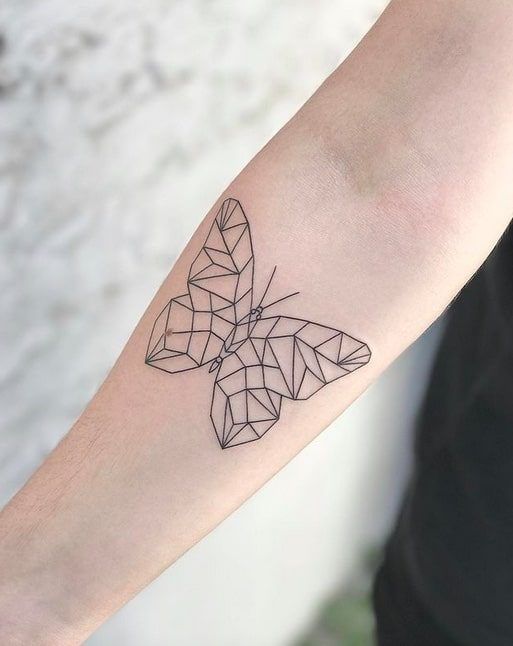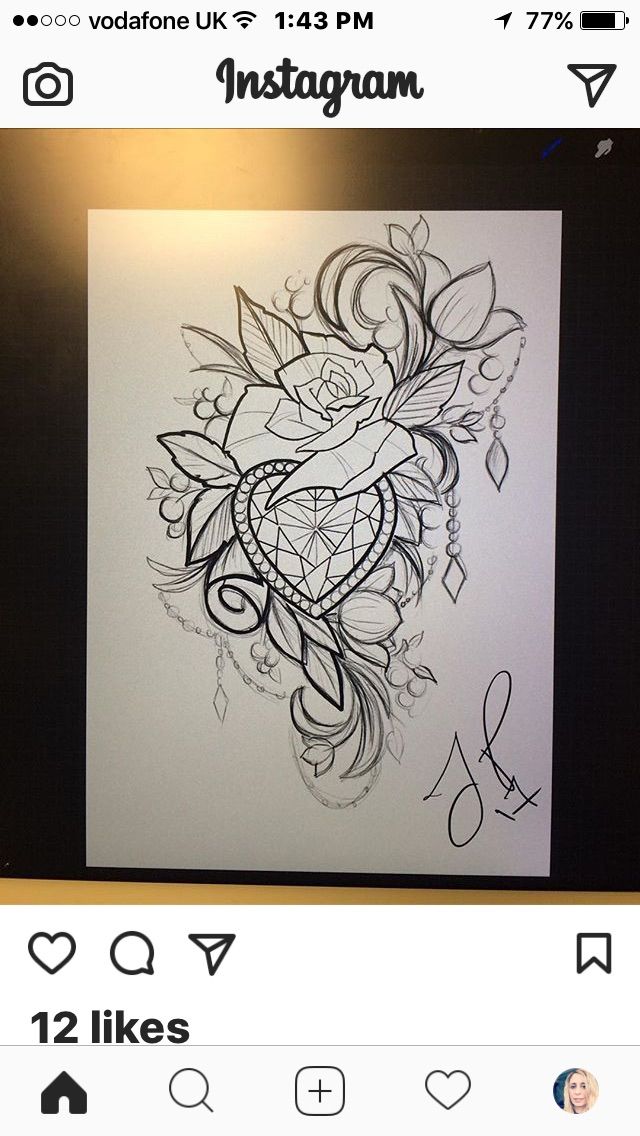The art of tattooing has evolved significantly over the years, with an increasing number of individuals embracing unique and minimalistic designs. Among the various styles, geometric tattoos have gained immense popularity for their clean lines, precise shapes, and timeless appeal. These tattoos offer a blend of simplicity and complexity, making them an intriguing choice for those seeking a subtle yet impactful body art piece. In this comprehensive guide, we will delve into the world of simple geometric tattoos, exploring their design elements, symbolism, and the artistic process involved in creating these captivating works of body art.
The Appeal of Geometric Tattoos

Geometric tattoos have an inherent appeal that transcends trends and time. Their precise, mathematical nature adds a touch of sophistication and intellect to the art of tattooing. Unlike intricate and detailed designs, geometric tattoos focus on the essence of shapes and their symbolic representations. This minimalist approach allows for a powerful statement, often conveying a deeper meaning through simplicity.
Furthermore, the versatility of geometric designs makes them suitable for various body parts and sizes. Whether it's a small, delicate tattoo on the wrist or a bold statement piece on the back, geometric tattoos can be adapted to suit individual preferences and anatomical features. Their clean lines and structured forms create a harmonious balance, making them a preferred choice for those seeking a tattoo that is both aesthetically pleasing and symbolic.
Exploring Design Elements

At the core of every geometric tattoo lies a foundation of fundamental shapes. These shapes, including circles, triangles, squares, and rectangles, form the building blocks of intricate designs. Artists often manipulate and combine these basic forms to create complex and unique patterns.
Circles and Spheres
Circles and spheres are perhaps the most commonly used shapes in geometric tattoos. They symbolize unity, completeness, and infinity. The perfect symmetry of a circle adds a sense of balance and harmony to a design, making it a popular choice for tattoos with deeper philosophical meanings. Circles can be incorporated into various patterns, such as mandalas, celestial bodies, or as a simple, elegant accent to other shapes.
Triangles and Pyramids
Triangles and pyramids bring a sense of stability and strength to geometric tattoos. With their three-sided structure, triangles represent balance and equilibrium. They can be oriented in different ways to symbolize various concepts, such as the upward-pointing triangle representing ascent or the downward-pointing triangle signifying descent or grounding. Pyramids, being three-dimensional triangles, add depth and perspective to a design, often symbolizing ancient wisdom and spiritual growth.
Squares and Cubes
Squares and cubes introduce a sense of structure and order to geometric tattoos. With their four equal sides and angles, squares represent stability, equality, and solidity. Cubes, being three-dimensional squares, add a further layer of depth and complexity. These shapes are often used to symbolize grounding, balance, and a connection to the physical world.
Lines and Curves
Lines and curves are essential elements in geometric tattoos, acting as connectors and defining the overall flow of a design. Straight lines can represent strength, clarity, and direction, while curved lines add a sense of movement and fluidity. The interplay between lines and shapes creates dynamic compositions, enhancing the visual impact of the tattoo.
Symbolism and Meaning
Beyond their aesthetic appeal, geometric tattoos often carry profound symbolic meanings. The choice of shapes, their arrangement, and even the colors used can convey specific messages and personal narratives. Here are some common symbolic interpretations associated with geometric tattoos:
- Mandalas: Mandalas, circular designs often featuring intricate geometric patterns, symbolize the universe, wholeness, and the interconnectedness of all things. They are believed to represent the journey towards self-discovery and spiritual growth.
- Sacred Geometry: Geometric tattoos inspired by sacred geometry explore the fundamental shapes and patterns found in nature and the universe. These designs often incorporate the Golden Ratio, Fibonacci sequence, and other mathematical concepts, symbolizing harmony, balance, and the divine order of the cosmos.
- Celtic Knots: Celtic knots, with their intricate interwoven patterns, represent eternity, continuity, and the interconnectedness of life. These tattoos are often chosen to symbolize unity, love, and the infinite nature of the human spirit.
- Tribal Designs: Geometric tattoos inspired by tribal cultures around the world often feature bold, stylized shapes and patterns. These tattoos can symbolize cultural heritage, strength, and a connection to ancient traditions and beliefs.
The Artistic Process
Creating a simple geometric tattoo is a meticulous process that requires skill, precision, and a deep understanding of design principles. Here’s an overview of the steps involved in bringing a geometric tattoo design to life:
Consultation and Conceptualization
The journey begins with a consultation between the artist and the client. This is where the client’s vision, ideas, and preferences are discussed in detail. The artist takes into account the client’s desired placement, size, and any specific symbols or meanings they wish to incorporate. Together, they conceptualize a design that aligns with the client’s vision and personal narrative.
Sketching and Drafting
Once the concept is finalized, the artist creates a detailed sketch or digital mock-up of the tattoo design. This stage involves precise measurements, careful consideration of proportions, and the strategic placement of shapes and lines. The artist may use specialized tools, such as stencils or transfer paper, to ensure accuracy and consistency in the final design.
Color Selection
While many geometric tattoos are executed in black and gray or a single color, some designs incorporate a limited color palette. The choice of colors is carefully considered to enhance the symbolism and visual impact of the tattoo. Colors can be used to add depth, highlight specific elements, or represent personal meanings.
Stenciling and Transfer
Before the tattooing process begins, the artist transfers the design onto the client’s skin using a stencil. This ensures that the final tattoo is an accurate representation of the original design. The artist may make slight adjustments during this stage to ensure the tattoo fits perfectly on the chosen body part.
Tattooing Technique
The tattooing process itself requires precision and attention to detail. Geometric tattoos often involve fine lines, intricate shapes, and sharp edges, making the artist’s skill and experience crucial. The artist uses various tattoo needles and techniques to create the desired effects, such as shading, highlighting, and adding depth to the design.
Healing and Aftercare
Once the tattoo is complete, proper aftercare is essential to ensure the best healing process and maintain the integrity of the design. The artist provides detailed instructions on cleaning, moisturizing, and protecting the tattoo during the healing phase. Following these guidelines helps prevent infection, minimize scarring, and ensure the tattoo heals cleanly and retains its original vibrancy.
Inspiring Geometric Tattoo Designs

To illustrate the beauty and versatility of simple geometric tattoos, here are a few captivating design examples:
Mandala Forearm Tattoo
A stunning mandala tattoo wrapping around the forearm, featuring intricate geometric patterns and vibrant colors. The design symbolizes the wearer’s spiritual journey and connection to the universe.
Minimalist Triangle Shoulder Tattoo
A delicate triangle tattoo on the shoulder, representing balance and stability. The simplicity of this design makes it a subtle yet powerful statement piece.
Sacred Geometry Back Tattoo
An elaborate back tattoo incorporating sacred geometric shapes and patterns. This design showcases the artist’s mastery of complex compositions and the client’s appreciation for mathematical beauty.
Tribal-Inspired Geometric Leg Tattoo
A bold leg tattoo inspired by tribal designs, featuring geometric shapes and bold lines. This tattoo symbolizes the wearer’s connection to their cultural heritage and strength.
Abstract Geometric Sleeve Tattoo
An abstract sleeve tattoo composed of interconnected geometric shapes and flowing lines. This design represents the wearer’s unique perspective and their journey of self-discovery.
Conclusion
Simple geometric tattoos offer a unique blend of aesthetic appeal and symbolic depth. Their precise shapes and clean lines create visually captivating designs that resonate with the wearer’s personal narrative. From the initial consultation to the final healing process, the creation of a geometric tattoo is a collaborative journey between the artist and the client, resulting in a lasting work of body art that tells a powerful story.
What makes geometric tattoos so appealing?
+Geometric tattoos appeal to many due to their clean, structured designs and the symbolic meanings they often carry. The precision and mathematical nature of these tattoos add an intellectual layer to body art, making them both aesthetically pleasing and thought-provoking.
Can geometric tattoos be personalized to represent personal meanings?
+Absolutely! Geometric tattoos can be customized to incorporate personal symbols, colors, and shapes, allowing individuals to create unique designs that hold deep personal significance.
Are geometric tattoos suitable for all body parts?
+Yes, geometric tattoos can be adapted to various body parts, from small and delicate designs on the wrist to large, bold pieces on the back or legs. The versatility of geometric shapes allows for endless possibilities in terms of placement and size.
What are some common symbols used in geometric tattoos?
+Common symbols in geometric tattoos include circles (representing unity and infinity), triangles (stability and strength), squares (balance and order), and sacred geometric shapes (symbolizing the divine order of the universe). These symbols can be combined and arranged in various ways to create unique designs.
How long does the process of creating a geometric tattoo typically take?
+The process can vary depending on the complexity of the design and the artist’s schedule. Simple geometric tattoos may take a few hours, while more intricate designs can span multiple sessions over several weeks or even months.